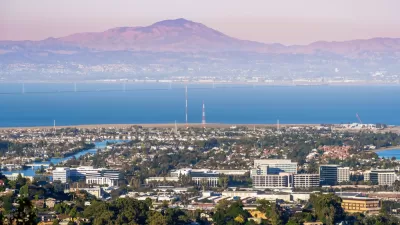The recession is taking its toll on the nation's population growth rate. A lagging birth rate and a precipitous drop in immigration, particularly those entering the country illegally, resulted in a 0.7% growth rate. Immigration is at a 20-year low.
The U.S. Census Bureau reported the growth data on December 21: "The nation's overall growth rate is now at its lowest point since before the baby boom," the Census Bureau director, Robert M. Groves, said in a statement. In 1945, the growth rate declined by 0.3%.
"We don't have that vibrancy that fuels the economy and people's sense of mobility," said William H. Frey, senior demographer at the Brookings Institution.
The decline in birthrates was uneven among demographic groups and states.
"In a particularly striking measure of economic distress, birth rates among Hispanics, who are concentrated in states hardest hit by the economic downturn, like Florida and Arizona, declined by 17 percent from 2007 to 2010, said Kenneth M. Johnson, the senior demographer at the Carsey Institute at the University of New Hampshire. That is compared with a 3.8 percent decline for whites and a 6.7 percent decline for blacks."
There are signs of a turn-around in some states.
Florida suffered "net losses of migrants in 2008 and 2009" but saw "a net gain of 108,000 newcomers in the year ending in July." However, once-fast-growing Arizona and Nevada was similar changes.
From U.S. Census Bureau Newsroom: Texas Gains the Most in Population Since the Census: "Texas gained more people than any other state between April 1, 2010, and July 1, 2011 (529,000), followed by California (438,000), Florida (256,000), Georgia (128,000) and North Carolina (121,000), according to the latest U.S. Census Bureau estimates for states and Puerto Rico. Combined, these five states accounted for slightly more than half the nation's total population growth."
FULL STORY: Economy Contributes to Slowest Population Growth Rate Since ’40s

Study: Maui’s Plan to Convert Vacation Rentals to Long-Term Housing Could Cause Nearly $1 Billion Economic Loss
The plan would reduce visitor accommodation by 25,% resulting in 1,900 jobs lost.

Alabama: Trump Terminates Settlements for Black Communities Harmed By Raw Sewage
Trump deemed the landmark civil rights agreement “illegal DEI and environmental justice policy.”

North Texas Transit Leaders Tout Benefits of TOD for Growing Region
At a summit focused on transit-oriented development, policymakers discussed how North Texas’ expanded light rail system can serve as a tool for economic growth.

San Diego County Sees a Rise in Urban Coyotes
San Diego County experiences a rise in urban coyotes, as sightings become prevalent throughout its urban neighbourhoods and surrounding areas.

Los Angeles County Invests in Wildfire Recovery for Parks, Trails, and Open Space
The $4.25 million RESTORE Program supports the recovery of parks, trails, and open spaces damaged by the January 2025 wildfires through targeted grants that promote community healing, wildfire resilience, and equitable access to nature.

Nevada Bills Aim to Establish Home Insurance Assurance Amidst Wildfire Risk
Republican sponsor hopes the FAIR plan would be “a true market of last resort.”
Urban Design for Planners 1: Software Tools
This six-course series explores essential urban design concepts using open source software and equips planners with the tools they need to participate fully in the urban design process.
Planning for Universal Design
Learn the tools for implementing Universal Design in planning regulations.
Alamo Area Metropolitan Planning Organization
City of Santa Clarita
Institute for Housing and Urban Development Studies (IHS)
City of Grandview
Harvard GSD Executive Education
Toledo-Lucas County Plan Commissions
Salt Lake City
NYU Wagner Graduate School of Public Service





























